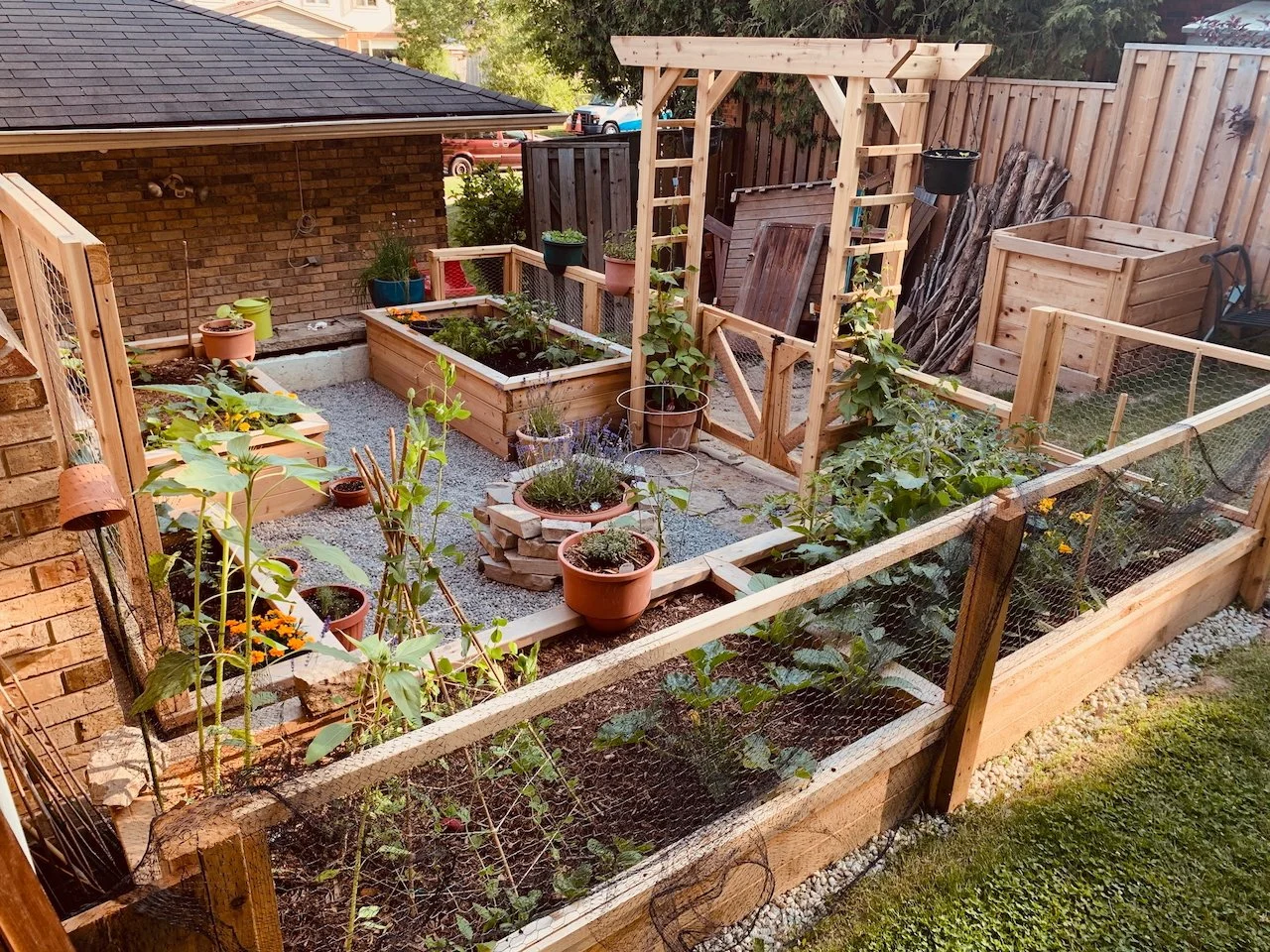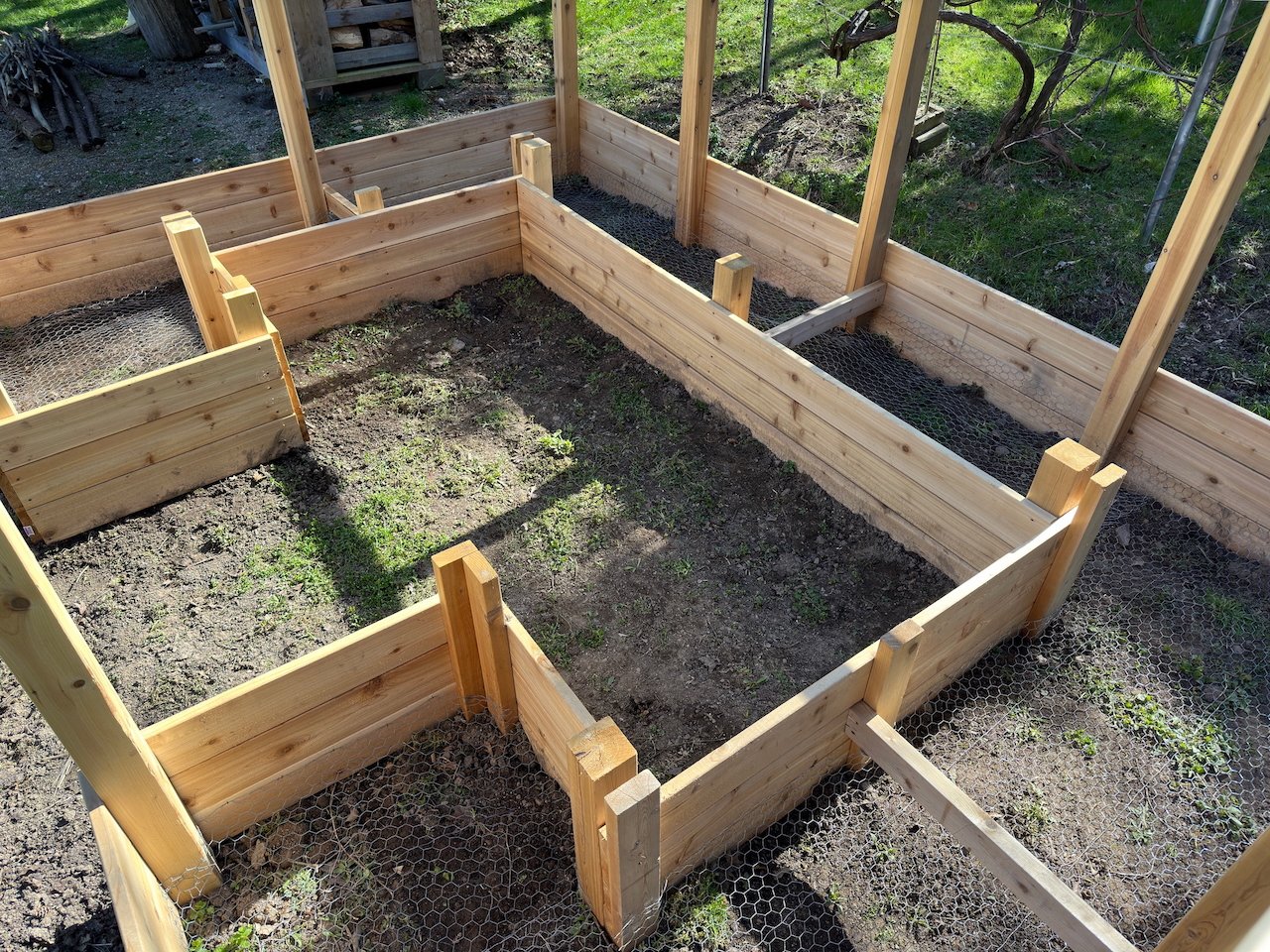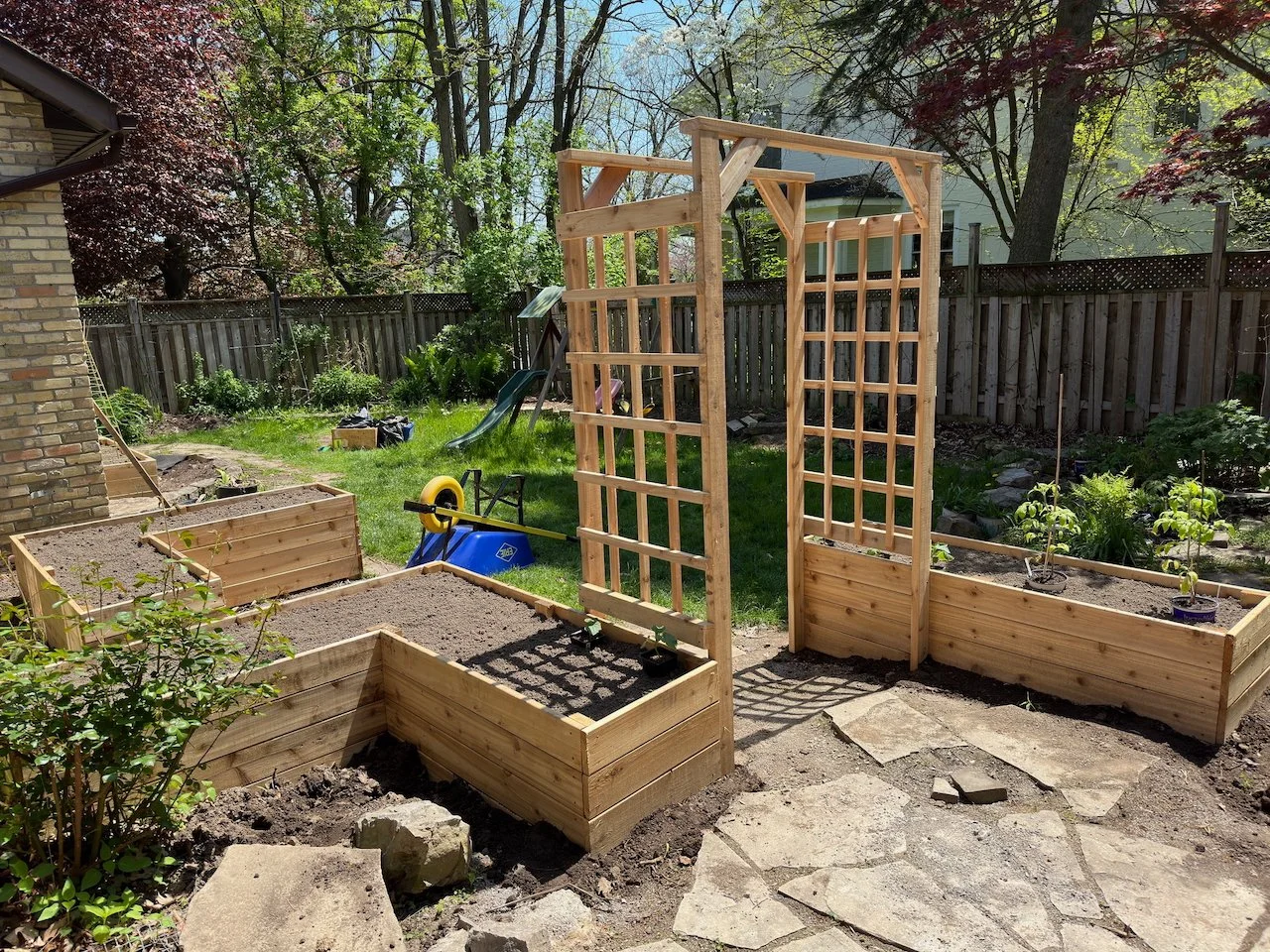Raised Beds or Not
French kitchen garden inspired fenced vegetable garden
Raised Beds or Not
There are some things to consider when it comes to adding raised beds into your garden (or not). Raised beds offer numerous advantages for vegetable gardening, but it's important to account for various considerations that will be different for each person.
Initial Investment: One of the most significant factors to keep in mind is the initial investment. Not everyone has the budget to create new raised beds, so it's essential to evaluate both the cost and effort involved. Materials such as wood, stone, or metal can vary in price and durability.
For example Cedar contains natural oils that make it resistant to rot, decay, and insect damage. This means it doesn't require chemical treatments, making it a safer option for growing vegetables. Cedar is known for its durability and can last between 10 to 20 years, depending on the type of cedar and local climate conditions. This long lifespan can offset the higher initial cost over time. If you compare it to Pine, Pine is a cheaper option but has a much shorter lifespan, typically lasting only 3-7 years if untreated. It is more susceptible to rot and insect damage, which means it may require more frequent replacements. Pressure-Treated Wood is treated with chemicals to resist rot and insects, making it a more affordable and durable option. However, the chemicals used can leach into the soil, which may not be ideal for vegetable gardens. It’s always important to do your research and find an option that suits your situation the best.
When planning your raised garden beds, it is essential to factor in the cost of soil to fill them. The price of soil can vary significantly based on its quality and composition. Investing in high-quality soil that suits the specific needs of the plants you intend to grow will enhance your garden's productivity and health. While purchasing quality soil is important, you can always improve it further by adding soil amendments. The cost of soil and amendments should be factored into your initial investment for raised garden beds. While high-quality soil may have a higher upfront cost, it can lead to better plant health and yields, ultimately providing greater value in the long run. Additionally, regularly amending your soil with compost and other organic materials can reduce the need for expensive fertilizers and soil conditioners over time.
Aesthetics and Accessibility: Raised beds can transform your garden into a tidy, well-organized space, offering plenty of creative design opportunities. They help maximize the use of small spaces, making it easier to organize and manage your garden. They are perfect for creating paths between beds and can be customized to fit your personal garden layout and accessibility needs.
Groundhog proofing fenced in garden beds with added chickenwire.
Weeding and Garden Pests: Raised beds can reduce weeds and make it easier to implement pest control measures. Elevated beds can act as a barrier, making it more difficult for some pests to reach your plants. Here in Southern Ontario, a cute garden pest is the bunny. Luckily for us, having raised beds helps deter rabbits from eating all our vegetables. Another vegetable garden enemy is the deer. Building your raised beds in an enclosed space will keep the deer away. Raised beds are also more ergonomic, minimizing the need for bending and kneeling when it comes to weeding, which can be beneficial for people with mobility issues.
Temperature Control: Raised beds warm up faster in the spring, giving you a head start on the growing season. However, they can also dry out more quickly in hot climates, requiring more frequent watering to keep your plants happy and hydrated.
Crop Rotation and Soil Amendments: Raised beds offer flexibility for crop rotation and soil management, allowing you to easily amend the soil and keep those nutrients in check. It is easier to control the soil composition ensuring your individual crops get the growing conditions they crave.
Soil Quality: If your property has low quality soil, rocky, or poor drainage, raised beds can provide better control over soil conditions. Raised beds also improve drainage in areas prone to water-logging, preventing root rot and other issues.
Separating play area from terrace with raised beds and a trellis
Deciding to use raised beds depends on your specific gardening needs and preferences. Raised beds are an excellent choice if you prefer the ergonomic advantages, desire more control over crop rotation, or you have poor soil conditions on your property. In our vegetable garden we chose to go the raised bed route because we saw the numerous benefits and knew it would work for us. We decided we would build our own beds with the tools we have and it has worked great for us. We were able to customize our garden exactly how we wanted it to be aesthetically and accessibly. Everyone’s requirements are different for their space and their creative vision. This is why we believe that building your beds is a great choice. It is also extremely rewarding to bring your vision to life. If you are interested in building your own raised beds we have a step by step guide on how we built ours and it is a great place to start.



